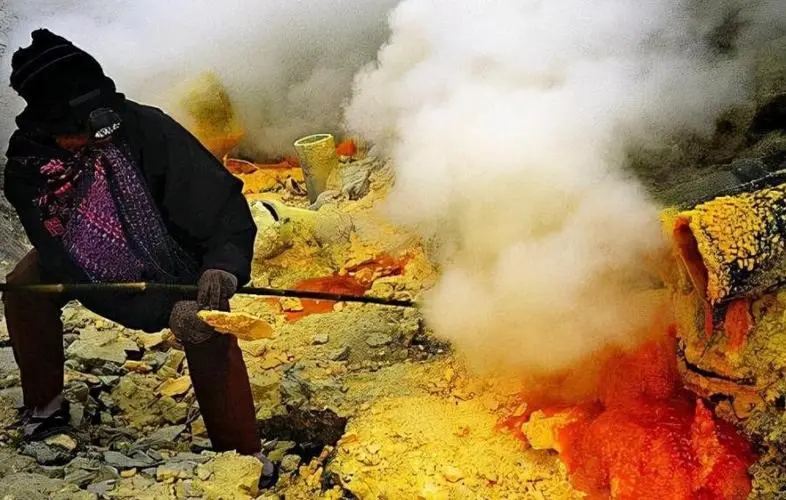The production of sulfuric acid relies heavily on the efficient burning of sulfur in furnaces. However, several issues can arise during the sulfur-burning process that may impact sulfuric acid production efficiency and safety. Understanding these common challenges is crucial for operators to optimize performance and mitigate risks. This article analyzes the top eleven issues related to sulfur burning in sulfuric acid production, providing insights and solutions to enhance operational effectiveness.

1. High or Low Temperature Rise Rates
High-Temperature Rise Rate
A high-temperature rise rate typically indicates that there is too much fuel oil or gas being injected into the furnace. To resolve this, it’s essential to adjust the fuel quantity to match the required temperature rise rate. It’s also normal for the temperature to spike suddenly during the initial ignition of the sulfur furnace. This phenomenon can be managed by gradually adjusting the combustion until the furnace reaches a stable and normal temperature rise rate.
Low-Temperature Rise Rate
Conversely, a low-temperature rise rate suggests that the fuel oil or gas injection is insufficient. This can result in low flue gas temperatures. Additionally, if there is excessive air entering the system, it can lower the flue gas temperature even further. Conversely, too little air can lead to incomplete combustion, resulting in the release of black smoke in the exhaust.
2. Local Overheating of the Furnace Shell
If you notice that specific areas of the sulfur furnace shell are overheating and turning red, this may indicate defects in the internal refractory lining, such as large cracks or collapses. Additionally, the refractory insulation layer at the temperature gauge or sight glass may be too thin, leading to elevated temperatures. Regular inspections can help identify and rectify these issues before they escalate.
3. Temperature Increase Not Observed After Sulfur Feeding
In some cases, the temperature in the furnace may not rise after sulfur feeding. This could be due to excessive sulfur feeding, which can lead to poor combustion. Other possible reasons include blockages in the sulfur gun, nozzle, or sulfur pipe, or malfunctions in the sulfur pump. Proper maintenance and monitoring of these are essential for maintaining optimal furnace operation.
4. No Flow During Sulfur Feeding
When sulfur is fed into the furnace, any lack of flow can point to several potential issues. The sulfur pump might be malfunctioning or operating in reverse. Additionally, there could be blockages in the liquid sulfur pipeline, the sulfur gun, or the flow meter. It’s important to address these problems promptly to ensure consistent and effective sulfur feeding.
5. Sublimated Sulfur in the Sight Glass
Sublimated sulfur, or more accurately, condensed sulfur, can obstruct the sight glass at the furnace’s head. This typically happens due to insufficient purging air flow or sulfur vapor entering the sight glass interface at low temperatures. While sublimated sulfur is less likely to appear in the furnace tail where sulfur has burned out, poor air circulation can damage the sight glass due to high temperatures.
6. Pure Sulfur Pump Malfunctions
If the pure sulfur pump fails to operate, this could indicate a fault within the pump itself or abnormal insulation steam around the pump. If the temperature of the pump body is too low, this may lead to the solidification of the sulfur, causing further operational challenges.
7. Difficulty in Increasing Sulfur Feeding Amount in the Process of Sulfuric Acid Production
Increasing sulfur feeding might be limited by the inefficient operation of the pure sulfur pump during sulfuric acid production. Additional factors that can contribute to this issue include blockages in the sulfur gun nozzle and the filtration system within the sulfur pipeline. Regular cleaning and maintenance can help prevent these problems.
8. Abnormal Liquid Levels in the Pure Sulfur Tank
Anomalies in liquid levels within the pure sulfur tank can stem from a faulty level gauge or malfunctions in the level regulator or control valve. Monitoring these systems closely can help maintain appropriate levels and prevent disruptions in operations.
9. Sulfur Presence in Condensate of Insulated Steam
If sulfur is found in the condensate of insulated steam within sulfur pipes, it could indicate a leak in the inner pipe of the pressurized sulfur pipe jacket. This allows sulfur to mix with insulation steam, resulting in acidic corrosion due to the interaction between sulfur and water. Such corrosion can develop rapidly, leading to significant issues within hours.
10. Sudden Temperature Fluctuations in the Sulfur Furnace
Sudden Sharp Increase
A sudden spike in temperature may occur due to an abrupt increase in liquid sulfur flow. This could be caused by nozzle failures, such as detachment or damage, or operational errors related to the pump’s frequency control. Additionally, a sharp decrease in air volume can occur due to blower tripping or fluctuations in rotation speed.
Sudden Sharp Decrease
Conversely, a sudden drop in liquid sulfur flow may be due to nozzle blockages, failures in the pure sulfur pump, or operational errors. A sudden increase in airflow from the blower can also happen, often linked to fluctuations in rotation speed.
11. Exceeding Temperature Limits
Operating the sulfur furnace beyond its temperature limits can pose significant safety risks. If temperature gauge faults are ruled out, excess sulfur feeding relative to airflow is often the cause. In such cases, the concentration of SO2 gas at the furnace outlet could exceed 12%. Due to the refractory lining’s limitations in high-temperature resistance, this situation is dangerous and must be addressed immediately.
Conclusion
In conclusion, it’s essential to address the key issues related to sulfur burning for the successful production of sulfuric acid. Identifying potential problems allows for the implementation of effective strategies that enhance production reliability. Regular maintenance, thorough inspections, and proactive problem-solving are crucial practices that can help mitigate risks and improve overall efficiency in sulfuric acid production. By prioritizing these critical areas, facilities can achieve safer and more efficient operations.
For more articles on the sulfuric acid industry, please visit our blogs and news on our website. Enjoy your reading!
You may also be interested in The Burning of Sulfur (Demonstration) (youtube.com)


